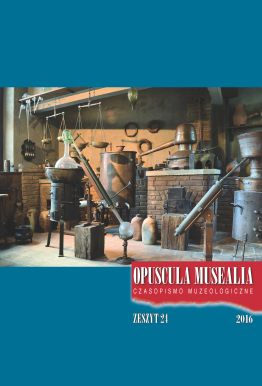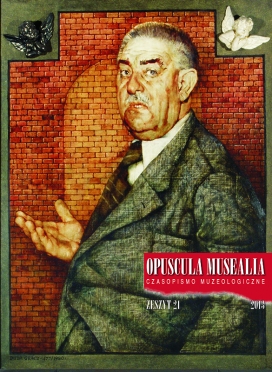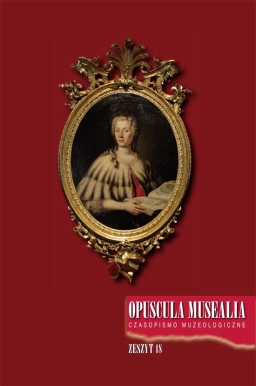W latach 2004–2006 w Zamku Królewskim w Warszawie przeprowadzono badania i konserwację dwóch obrazów Rembrandta van Rijn (1606–1669): Dziewczyna w ramie obrazu i Uczony przy pulpicie, namalowanych w technice olejnej na podłożach drewnianych, około 105,5 × 76,5 cm, sygnowanych i datowanych na rok 1641. Są to tzw. tronie – wizerunki nieznanych osób, w późniejszym czasie połączone w pendant tytułami i wymiarami.
Do zbiorów polskich obrazy trafiły z berlińskiej kolekcji hrabiów Kamecke, kupione w roku 1777 przez Stanisława Augusta Poniatowskiego. W 1815 roku obrazy zostały sprzedane Kazimierzowi Rzewuskiemu, a następnie były dziedziczone przez rodzinę Lanckorońskich. Od roku 1902 były one publicznie udostępniane w wiedeńskim pałacu Karola Lanckorońskiego i pozostawały w jego kolekcji do czasu II wojny światowej. Po roku 1950 odzyskane przez spadkobierców kolekcjonera po hitlerowskiej grabieży zostały uznane za zaginione i tym samym – stały się niedostępne dla badaczy. W roku 1969 na podstawie fotografii autorstwo Rembrandta zakwestionował Horst Gerson. Jako niedostępne nie mogły też być uwzględnione w trzecim tomie Corpus of Rembrandt paintings, obejmującym lata 1635–1642. W roku 1994 w darze profesor Karoliny Lanckorońskiej dla demokratycznej Polski oba dzieła – wcześniej utajnione przez właścicieli – zostały przekazane do Zamku Królewskiego w Warszawie.
W przeszłości cieszące się dużym uznaniem obrazy były wielokrotnie kopiowane. Przedstawiają je grafiki G.F. Schmidta z 1769 i 1770 roku oraz W. Ungera z 1876 roku, miniatury W. Lesseura z 1797 roku, anonimowe olejne kopie na podłożu płóciennym w zamkach na Wawelu i w Złoczowie (Ukraina); olejne kopie portretu kobiecego znajdują się też w muzeach w Kopenhadze, Wilanowie i Łańcucie. Najbliższe oryginałom są grafiki G.F. Schmidta, a portretowi Dziewczyny – kopia kopenhaska.
Zwraca uwagę fakt, że w kopiach Dziewczyny częściej występują różnice w stosunku do oryginału, np. krótsze ręce, odmienne opracowania sukni i tła oraz różne umiejscowienie sygnatury bądź jej brak, co częściowo dokumentuje zmiany, jakim podlegał oryginał.
Po pozyskaniu obrazów Zamek Królewski w Warszawie rozpoczął badania dzieł z udziałem profesora Ernsta van de Weteringa, przewodniczącego Rembrandt Research Project, opracowującego Corpus of Rembrandt paintings. Konserwacja wraz z interdyscyplinarnymi badaniami, w tym także budowy technicznej i technologicznej obrazów, przeprowadzonymi na Wydziałach Konserwacji i Restauracji Dzieł Sztuki ASP w Warszawie i ASP w Krakowie oraz Politechnice Warszawskiej i Uniwersytecie Warszawskim (m.in. UV, IR, RTG, analizy mikroskopowe, mikrochemiczne, stratygraficzne, SEM-EDS, FTIR, GC-MS), została zakończona reatrybucją obu dzieł Rembrandta, ogłoszoną przez profesora Ernsta van de Weteringa.
Badania określiły budowę techniczną i technologiczną obrazów. Topolowe podobrazia nie są typowe dla Rembrandta, ale w latach 40. XVII wieku kilkakrotnie zostały przez niego zastosowane. Grunty z bielą ołowiową i kredą, ugrowe imprimitury, brak rysunków wstępnych kompozycji, występujące w olejnych (olej lniany i orzechowy) warstwach malarskich pigmenty i wypełniacze (także w mieszaninach: biel ołowiowa, żółcień cynowo-ołowiowa, smalta, ziemia zielona, ochra żółta, cynober [lub vermilion], ochra czerwona, czerwień organiczna, żółte i brązowe związki żelaza, brąz bitumiczny [kasselski?], czerń kostna) oraz sposób opracowywania warstw malarskich są charakterystyczne dla artysty. Sygnatura w Uczonym przy pulpicie jest wzorcowa, w Dziewczynie w ramie obrazu – niepewna, poprawiana.
Przed konserwacją oba obrazy były ogólnie dobrze zachowane, jednak ich artystyczny wyraz – znacznie zubożony zbrudzonymi i mocno pożółkłymi werniksami, przebarwionymi retuszami oraz rozległymi przemalowaniami. W szczególnie złym stanie była suknia Dziewczyny, z licznymi ubytkami i odspojeniami warstw malarskich, podtrzymywanymi grubymi werniksami. Wokół głowy modelki i na jej torsie uwidocznił się też – poprzez uszkodzenia i rosnącą w czasie transparencję warstw wierzchnich – wykonany czarną farbą szkic rozpoczętego wcześniej innego portretu kobiecego (wykazany w ww. badaniach). Wzmagający się z czasem ślad szkicu stał się przyczyną późniejszych uszkodzeń i zasadniczych przemalowań tła portretu z kolumną oraz sukni modelki i iluzjonistycznej ramy. W trakcie konserwacji obrazu usunięto warstwy wtórnych werniksów, podklejając jednocześnie łuszczącą się warstwę malarską; usunięto rozległe retusze i część przemalowań. W portrecie Uczonego usunięto wtórne werniksy, retusze i znaczne przemalowania w tle portretu.
Projekt badawczo-konserwatorski, nagrodzony Sybillą 2006, zakończył się uznaniem autorstwa Rembrandta obu obrazów; portret Dziewczyny został wyróżniony jako jedyne pełne trompe l’oeil w jego twórczości.
W konsekwencji obrazy były eksponowane na najważniejszej wystawie Roku Rembrandta 2006: Rembrandt. Quest of a genius w Rembrandthuis, Amsterdam (z Dziewczyną na okładce katalogu) i w Gemäldegalerie, Berlin. Obrazy, ostatnio wystawiane w Japonii, Francji i Hiszpanii, powróciły w listopadzie 2011 roku do nowej Galerii Lanckorońskich w Zamku Królewskim w Warszawie.
































